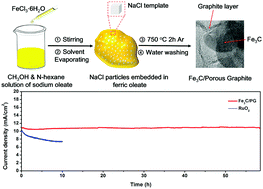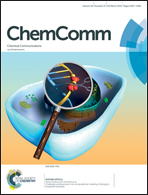Fe3C nanoparticles encapsulated in highly crystalline porous graphite: salt-template synthesis and enhanced electrocatalytic oxygen evolution activity and stability†
Abstract
Fe3C nanoparticles encapsulated in 3D porous graphite frameworks are fabricated via a cost-effective and scalable in situ salt template method. Thanks to the highly graphitic protecting layer on Fe3C nanoparticles and the 3D porous frameworks, the obtained materials exhibit excellent long-term durability and comparable electrocatalytic oxygen evolution activity with the state-of-the-art RuO2 catalyst.



 Please wait while we load your content...
Please wait while we load your content...